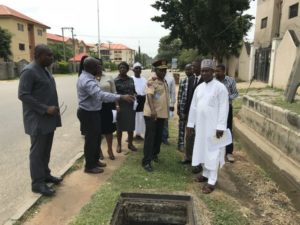To assess progress toward the goals in an NMT strategy, governments should conduct periodic audits of NMT facilities and surveys of transport system users. Initially, key surveys should cover the following aspects:
- Street environment: Footpath presence, footpath height, cycle track presence, road width, crossing availability, presence of shade, lighting, landscaping, frontage, etc.
- NMT demand and behaviour: Pedestrian and cyclist volumes on various corridors in the city.
- Crash data: Information on crashes involving pedestrians and cyclists, including the crash location and time of day, should be collected.
This information should be stored in a citywide asset management system built on a Geographic Information Systems (GIS) platform. The database can be used to identify the gaps between existing and desirable walking and cycling facilities and can inform the prioritisation of NMT projects. Over the medium to long term, data on the physical environment should be supplemented by citywide information on mode shares and travel patterns obtained from periodic household surveys.
Performance indicators for NMT strategies.
| Goals | Indicator | Desired direction |
| Increased mode share for sustainable transport modes | Mode share of walking, cycling, and public transport | Increase |
| Mode share of personal motor vehicles | Decrease | |
| Improved infrastructure for
pedestrians and cyclists |
Coverage of footpaths (fraction of 12+ m streets with footpaths) | Increase |
| Coverage of cycle tracks (fraction of 12+ m streets with cycle tracks) | Increase | |
| Reduced use of personal motor vehicles | Mode share of personal motor vehicles | Decrease |
| Mode share of shared modes of transport | Increase | |
| Improved reach of public transport | Fraction of the population living within 500 m of a public transport bus stop with a service frequency of at least 12 buses per hour | Increase |
| People near transit (within 500 m of MRT) | Increase | |
| Universal access | Fraction of public transport and NMT facilities that are universally accessible | Increase |
| Improved quality of public transport | Size of bus fleet: high quality public transport buses per 100,000 population | Increase |
| Improving traffic safety | Fatalities per 100,000 population per year | Decrease |
| Improving air quality | Number of poor air quality days | Decrease |
